实例介绍
【实例截图】

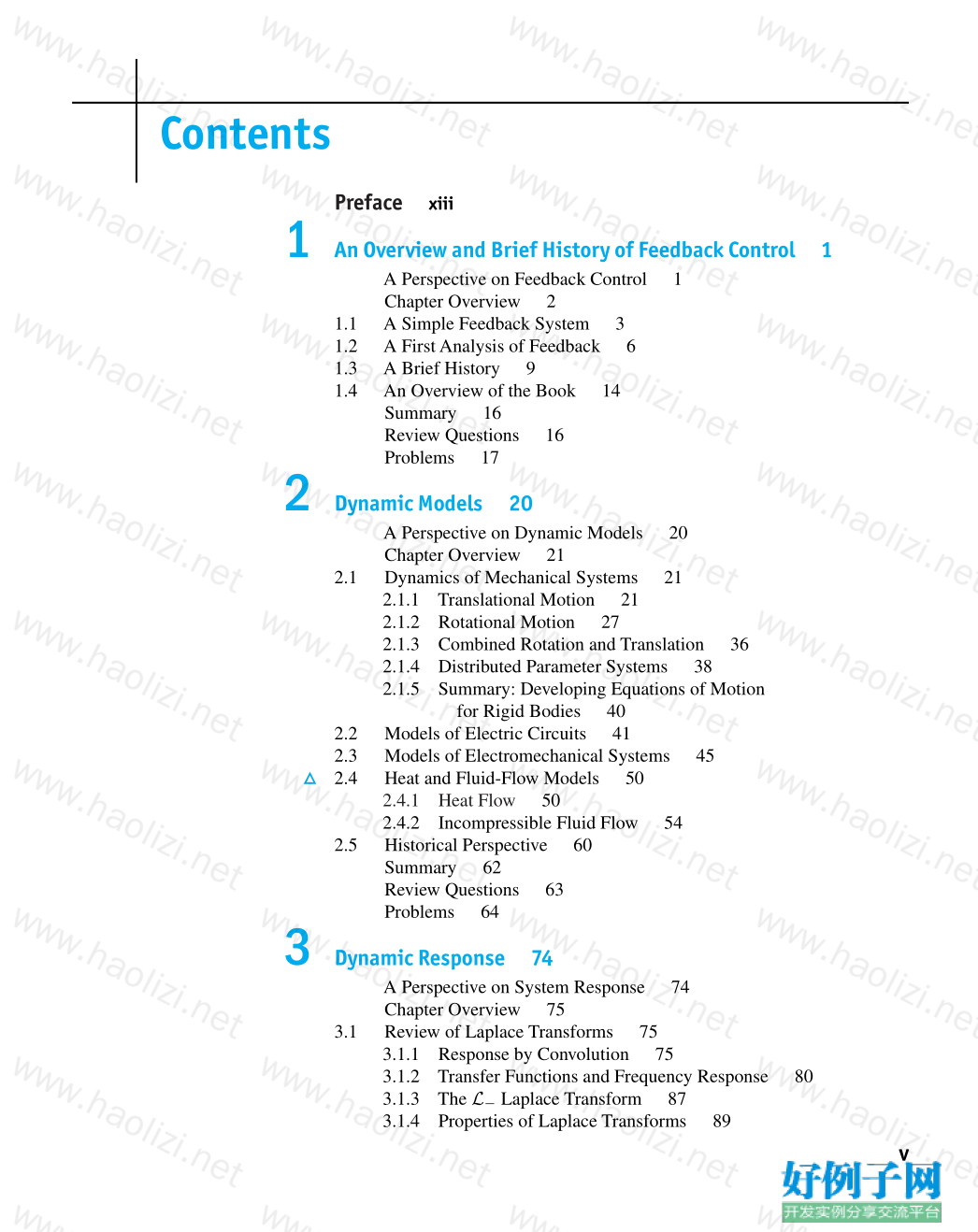
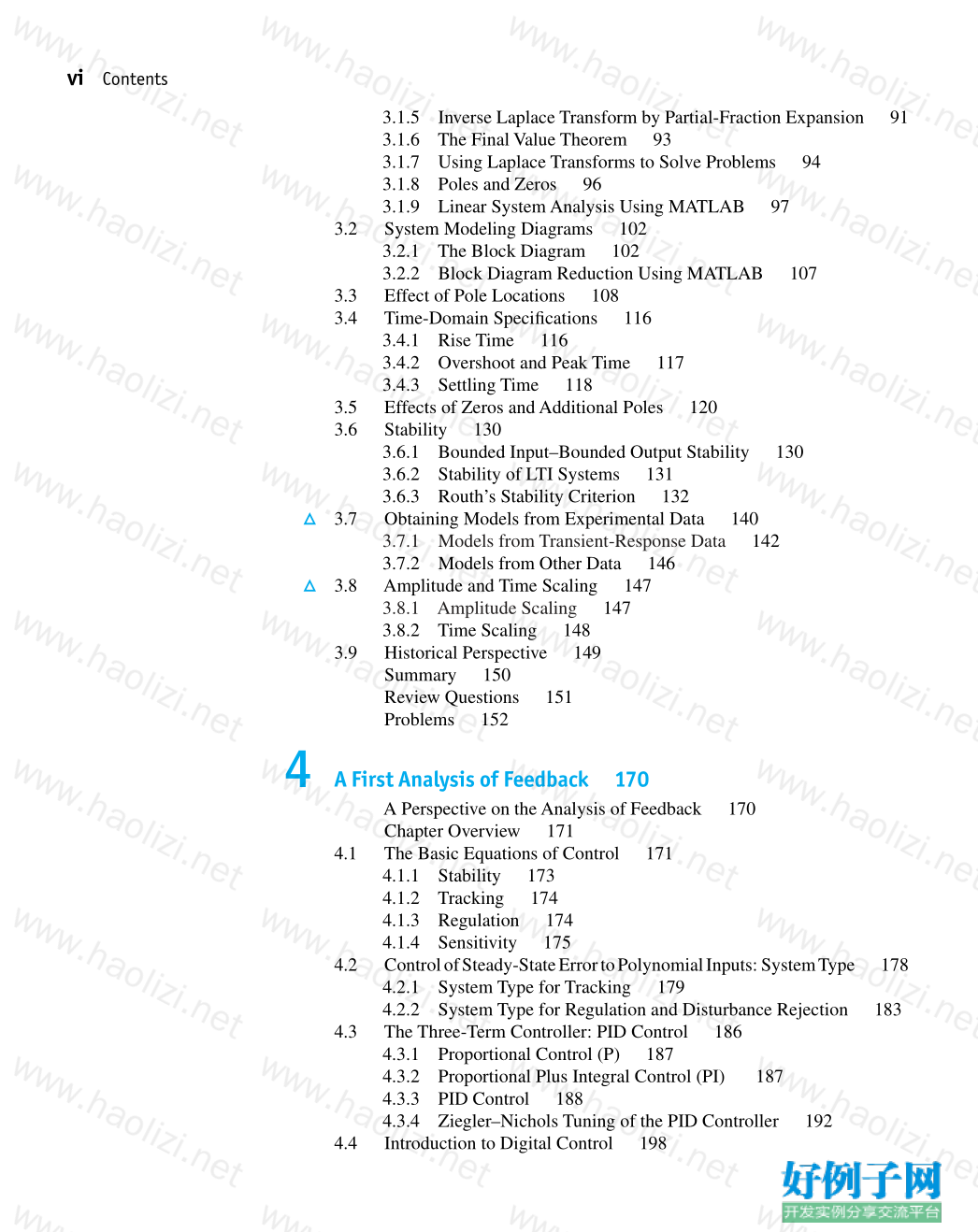
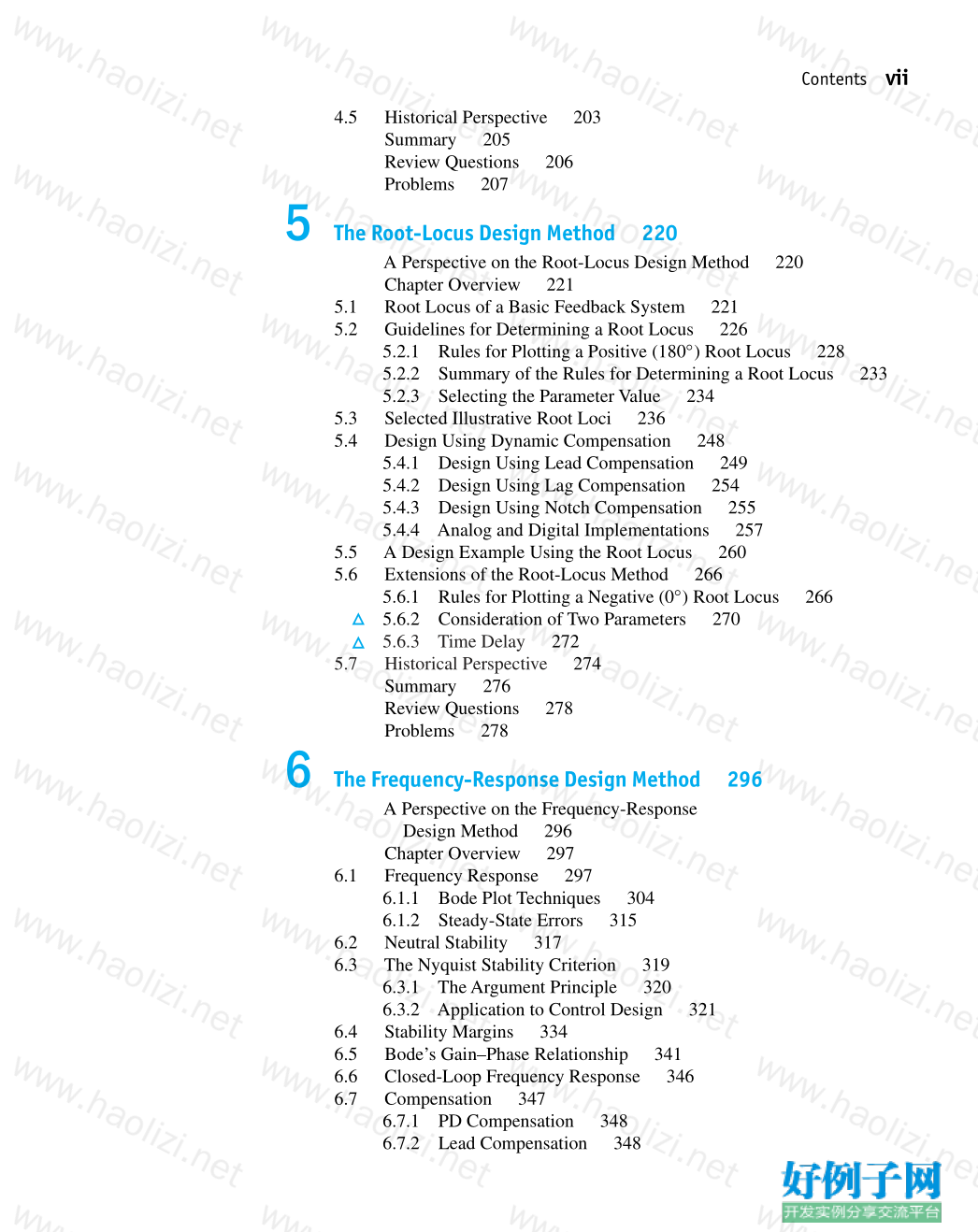
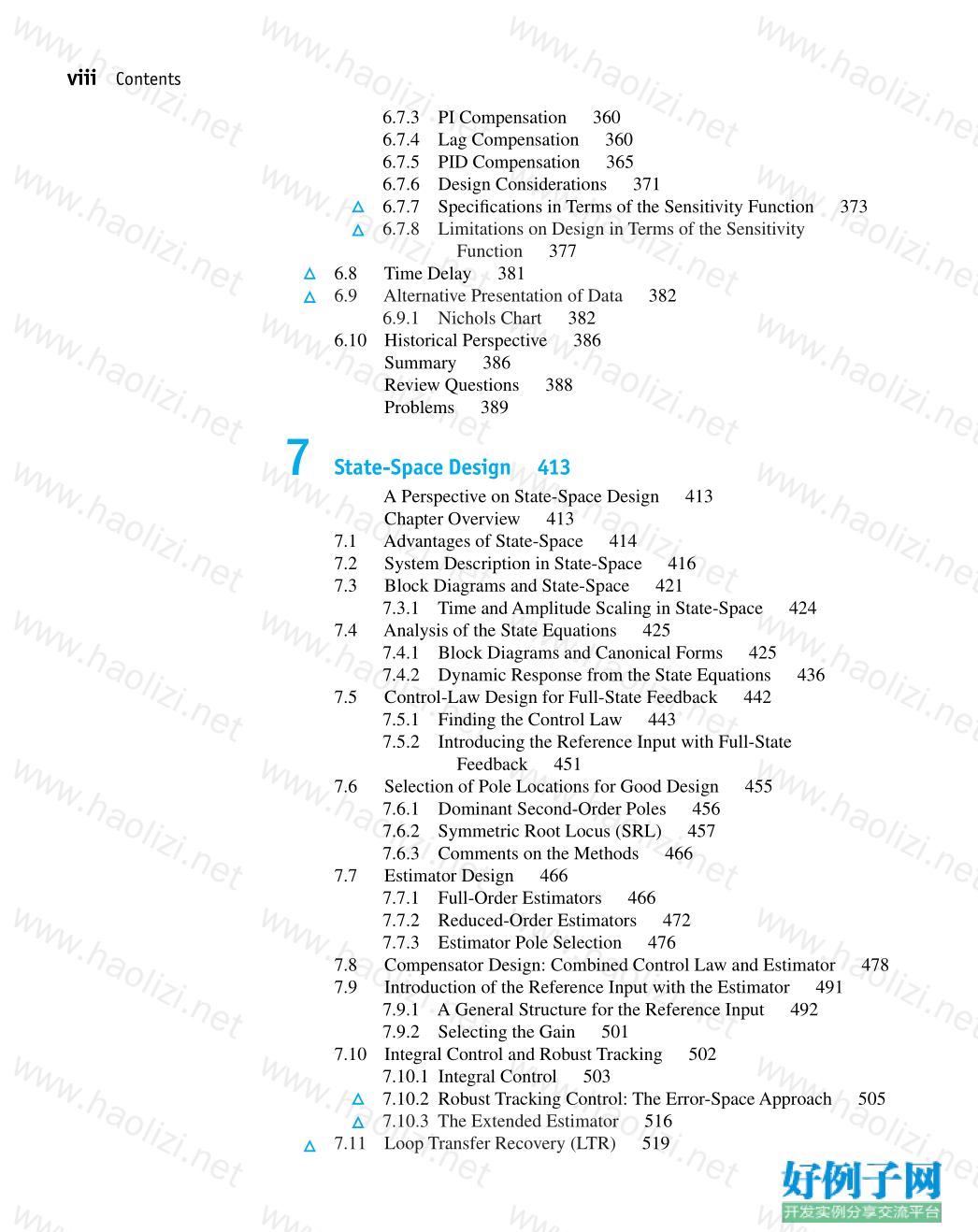
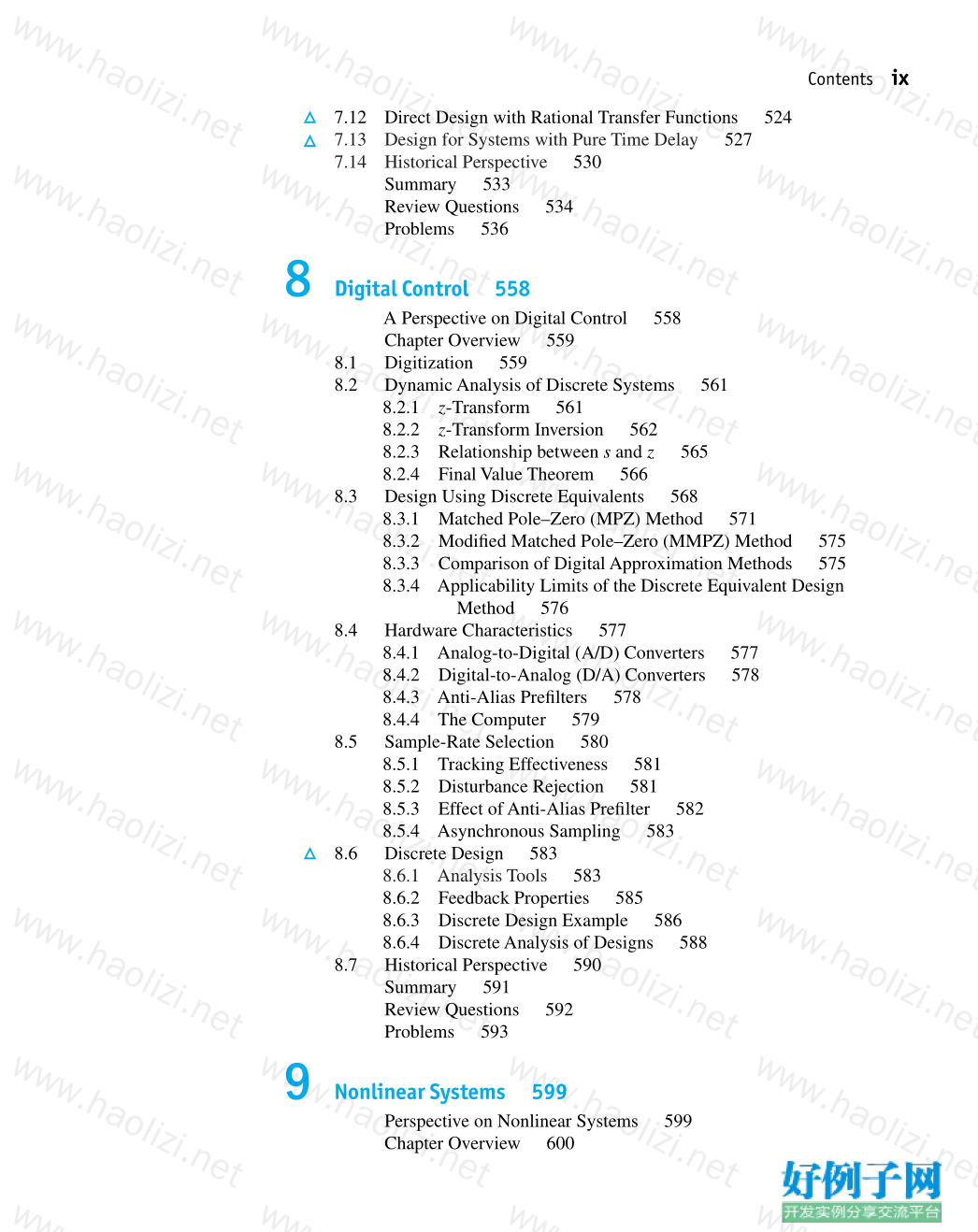
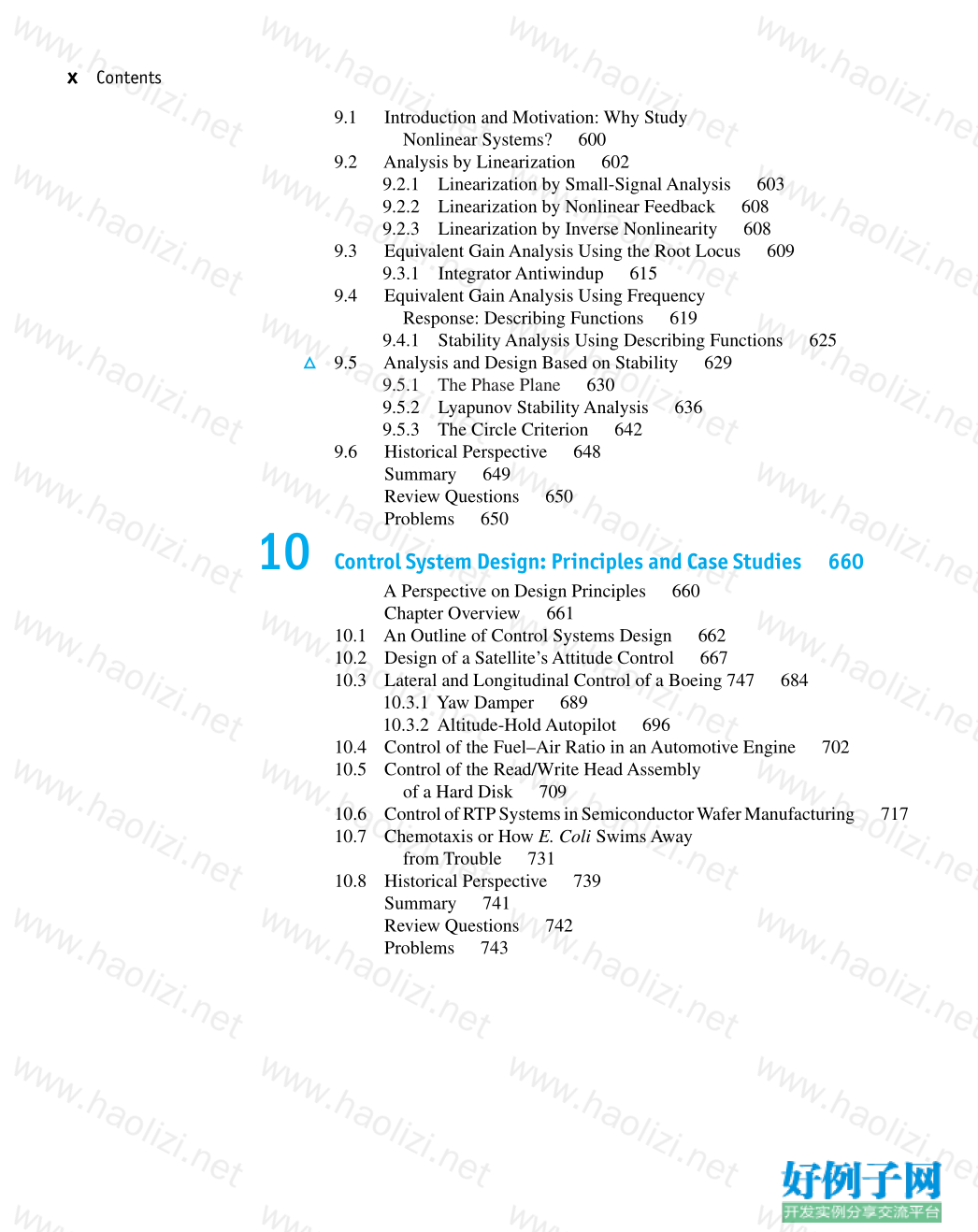
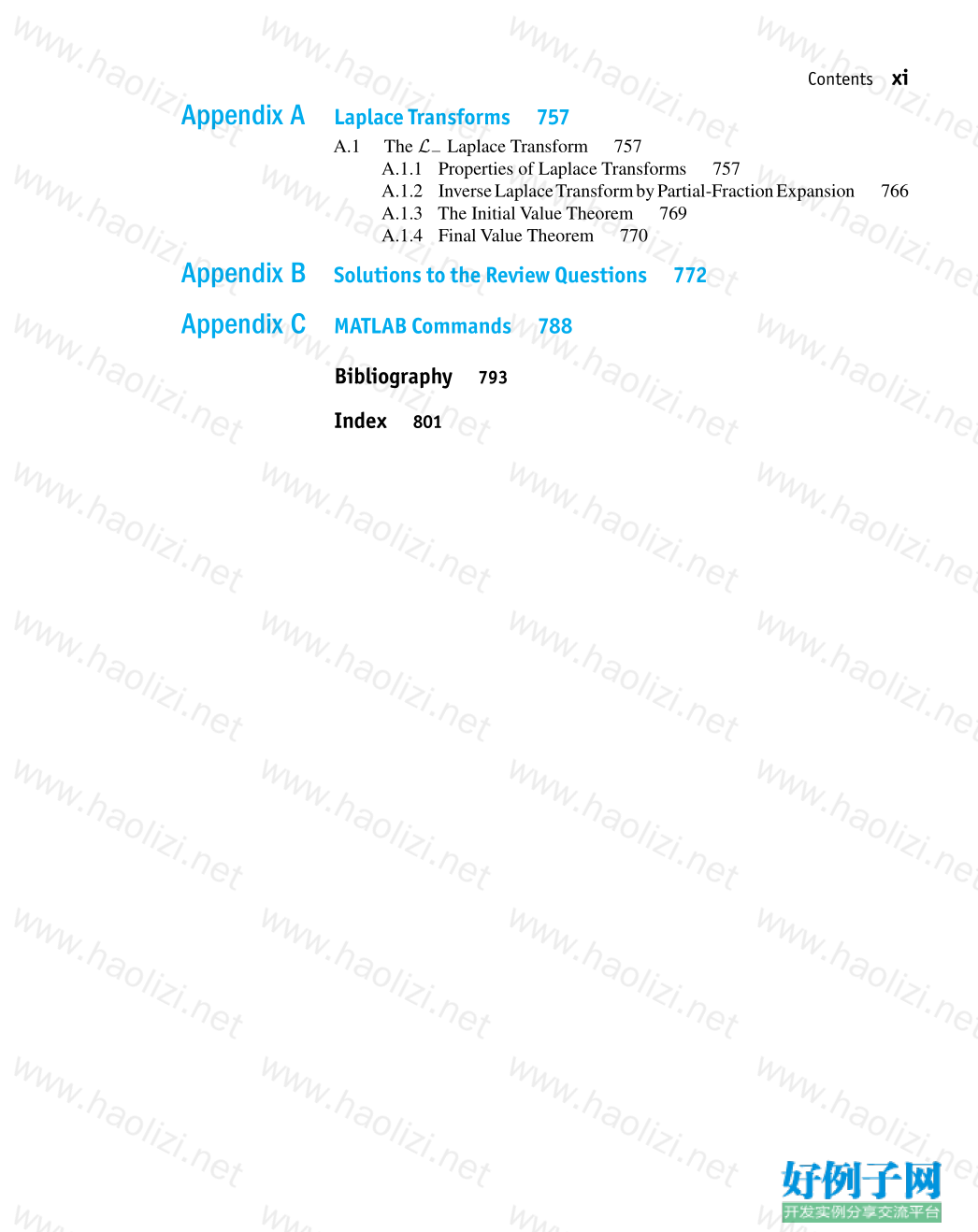
【核心代码】
Contents
Preface xiii
1 An Overview and Brief History of Feedback Control 1
A Perspective on Feedback Control 1
Chapter Overview 2
1.1 A Simple Feedback System 3
1.2 A FirstAnalysis of Feedback 6
1.3 A Brief History 9
1.4 An Overview of the Book 14
Summary 16
Review Questions 16
Problems 17
2 Dynamic Models 20
A Perspective on Dynamic Models 20
Chapter Overview 21
2.1 Dynamics of Mechanical Systems 21
2.1.1 Translational Motion 21
2.1.2 Rotational Motion 27
2.1.3 Combined Rotation and Translation 36
2.1.4 Distributed Parameter Systems 38
2.1.5 Summary: Developing Equations of Motion
for Rigid Bodies 40
2.2 Models of Electric Circuits 41
2.3 Models of Electromechanical Systems 45
2.4 Heat and Fluid-Flow Models 50 ?
2.4.1 Heat Flow 50
2.4.2 Incompressible Fluid Flow 54
2.5 Historical Perspective 60
Summary 62
Review Questions 63
Problems 64
3 Dynamic Response 74
A Perspective on System Response 74
Chapter Overview 75
3.1 Review of Laplace Transforms 75
3.1.1 Response by Convolution 75
3.1.2 Transfer Functions and Frequency Response 80
3.1.3 The L − Laplace Transform 87
3.1.4 Properties of Laplace Transforms 89
v
vi Contents
3.1.5 Inverse Laplace Transform by Partial-Fraction Expansion 91
3.1.6 The Final Value Theorem 93
3.1.7 Using Laplace Transforms to Solve Problems 94
3.1.8 Poles and Zeros 96
3.1.9 Linear SystemAnalysis Using MATLAB 97
3.2 System Modeling Diagrams 102
3.2.1 The Block Diagram 102
3.2.2 Block Diagram Reduction Using MATLAB 107
3.3 Effect of Pole Locations 108
3.4 Time-Domain Specifications 116
3.4.1 Rise Time 116
3.4.2 Overshoot and Peak Time 117
3.4.3 Settling Time 118
3.5 Effects of Zeros andAdditional Poles 120
3.6 Stability 130
3.6.1 Bounded Input–Bounded Output Stability 130
3.6.2 Stability of LTI Systems 131
3.6.3 Routh’s Stability Criterion 132
3.7 Obtaining Models from Experimental Data 140 ?
3.7.1 Models from Transient-Response Data 142
3.7.2 Models from Other Data 146
3.8 Amplitude and Time Scaling 147 ?
3.8.1 Amplitude Scaling 147
3.8.2 Time Scaling 148
3.9 Historical Perspective 149
Summary 150
Review Questions 151
Problems 152
4 A First Analysis of Feedback 170
A Perspective on theAnalysis of Feedback 170
Chapter Overview 171
4.1 The Basic Equations of Control 171
4.1.1 Stability 173
4.1.2 Tracking 174
4.1.3 Regulation 174
4.1.4 Sensitivity 175
4.2 ControlofSteady-StateErrortoPolynomialInputs:SystemType 178
4.2.1 System Type for Tracking 179
4.2.2 System Type for Regulation and Disturbance Rejection 183
4.3 The Three-Term Controller: PID Control 186
4.3.1 Proportional Control (P) 187
4.3.2 Proportional Plus Integral Control (PI) 187
4.3.3 PID Control 188
4.3.4 Ziegler–Nichols Tuning of the PID Controller 192
4.4 Introduction to Digital Control 198
Contents vii
4.5 Historical Perspective 203
Summary 205
Review Questions 206
Problems 207
5 The Root-Locus Design Method 220
A Perspective on the Root-Locus Design Method 220
Chapter Overview 221
5.1 Root Locus of a Basic Feedback System 221
5.2 Guidelines for Determining a Root Locus 226
5.2.1 Rules for Plotting a Positive (180 ◦ ) Root Locus 228
5.2.2 Summary of the Rules for Determining a Root Locus 233
5.2.3 Selecting the Parameter Value 234
5.3 Selected Illustrative Root Loci 236
5.4 Design Using Dynamic Compensation 248
5.4.1 Design Using Lead Compensation 249
5.4.2 Design Using Lag Compensation 254
5.4.3 Design Using Notch Compensation 255
5.4.4 Analog and Digital Implementations 257
5.5 A Design Example Using the Root Locus 260
5.6 Extensions of the Root-Locus Method 266
5.6.1 Rules for Plotting a Negative (0 ◦ ) Root Locus 266
5.6.2 Consideration of Two Parameters 270 ?
5.6.3 Time Delay 272 ?
5.7 Historical Perspective 274
Summary 276
Review Questions 278
Problems 278
6 The Frequency-Response Design Method 296
A Perspective on the Frequency-Response
Design Method 296
Chapter Overview 297
6.1 Frequency Response 297
6.1.1 Bode Plot Techniques 304
6.1.2 Steady-State Errors 315
6.2 Neutral Stability 317
6.3 The Nyquist Stability Criterion 319
6.3.1 TheArgument Principle 320
6.3.2 Application to Control Design 321
6.4 Stability Margins 334
6.5 Bode’s Gain–Phase Relationship 341
6.6 Closed-Loop Frequency Response 346
6.7 Compensation 347
6.7.1 PD Compensation 348
6.7.2 Lead Compensation 348
viii Contents
6.7.3 PI Compensation 360
6.7.4 Lag Compensation 360
6.7.5 PID Compensation 365
6.7.6 Design Considerations 371
6.7.7 Specifications in Terms of the Sensitivity Function 373 ?
6.7.8 Limitations on Design in Terms of the Sensitivity ?
Function 377
6.8 Time Delay 381 ?
6.9 Alternative Presentation of Data 382 ?
6.9.1 Nichols Chart 382
6.10 Historical Perspective 386
Summary 386
Review Questions 388
Problems 389
7 State-Space Design 413
A Perspective on State-Space Design 413
Chapter Overview 413
7.1 Advantages of State-Space 414
7.2 System Description in State-Space 416
7.3 Block Diagrams and State-Space 421
7.3.1 Time andAmplitude Scaling in State-Space 424
7.4 Analysis of the State Equations 425
7.4.1 Block Diagrams and Canonical Forms 425
7.4.2 Dynamic Response from the State Equations 436
7.5 Control-Law Design for Full-State Feedback 442
7.5.1 Finding the Control Law 443
7.5.2 Introducing the Reference Input with Full-State
Feedback 451
7.6 Selection of Pole Locations for Good Design 455
7.6.1 Dominant Second-Order Poles 456
7.6.2 Symmetric Root Locus (SRL) 457
7.6.3 Comments on the Methods 466
7.7 Estimator Design 466
7.7.1 Full-Order Estimators 466
7.7.2 Reduced-Order Estimators 472
7.7.3 Estimator Pole Selection 476
7.8 Compensator Design: Combined Control Law and Estimator 478
7.9 Introduction of the Reference Input with the Estimator 491
7.9.1 A General Structure for the Reference Input 492
7.9.2 Selecting the Gain 501
7.10 Integral Control and Robust Tracking 502
7.10.1 Integral Control 503
7.10.2 Robust Tracking Control: The Error-SpaceApproach 505 ?
7.10.3 The Extended Estimator 516 ?
7.11 Loop Transfer Recovery (LTR) 519
?
Contents ix
7.12 Direct Design with Rational Transfer Functions 524 ?
7.13 Design for Systems with Pure Time Delay 527 ?
7.14 Historical Perspective 530
Summary 533
Review Questions 534
Problems 536
8 Digital Control 558
A Perspective on Digital Control 558
Chapter Overview 559
8.1 Digitization 559
8.2 DynamicAnalysis of Discrete Systems 561
8.2.1 z-Transform 561
8.2.2 z-Transform Inversion 562
8.2.3 Relationship between s and z 565
8.2.4 Final Value Theorem 566
8.3 Design Using Discrete Equivalents 568
8.3.1 Matched Pole–Zero (MPZ) Method 571
8.3.2 Modified Matched Pole–Zero (MMPZ) Method 575
8.3.3 Comparison of DigitalApproximation Methods 575
8.3.4 Applicability Limits of the Discrete Equivalent Design
Method 576
8.4 Hardware Characteristics 577
8.4.1 Analog-to-Digital (A/D) Converters 577
8.4.2 Digital-to-Analog (D/A) Converters 578
8.4.3 Anti-Alias Prefilters 578
8.4.4 The Computer 579
8.5 Sample-Rate Selection 580
8.5.1 Tracking Effectiveness 581
8.5.2 Disturbance Rejection 581
8.5.3 Effect ofAnti-Alias Prefilter 582
8.5.4 Asynchronous Sampling 583
8.6 Discrete Design 583 ?
8.6.1 Analysis Tools 583
8.6.2 Feedback Properties 585
8.6.3 Discrete Design Example 586
8.6.4 DiscreteAnalysis of Designs 588
8.7 Historical Perspective 590
Summary 591
Review Questions 592
Problems 593
9 Nonlinear Systems 599
Perspective on Nonlinear Systems 599
Chapter Overview 600
x Contents
9.1 Introduction and Motivation: Why Study
Nonlinear Systems? 600
9.2 Analysis by Linearization 602
9.2.1 Linearization by Small-SignalAnalysis 603
9.2.2 Linearization by Nonlinear Feedback 608
9.2.3 Linearization by Inverse Nonlinearity 608
9.3 Equivalent GainAnalysis Using the Root Locus 609
9.3.1 IntegratorAntiwindup 615
9.4 Equivalent GainAnalysis Using Frequency
Response: Describing Functions 619
9.4.1 StabilityAnalysis Using Describing Functions 625
9.5 Analysis and Design Based on Stability 629 ?
9.5.1 The Phase Plane 630
9.5.2 Lyapunov StabilityAnalysis 636
9.5.3 The Circle Criterion 642
9.6 Historical Perspective 648
Summary 649
Review Questions 650
Problems 650
10 Control System Design: Principles and Case Studies 660
A Perspective on Design Principles 660
Chapter Overview 661
10.1 An Outline of Control Systems Design 662
10.2 Design of a Satellite’sAttitude Control 667
10.3 Lateral and Longitudinal Control of a Boeing 747 684
10.3.1 Yaw Damper 689
10.3.2 Altitude-HoldAutopilot 696
10.4 Control of the Fuel–Air Ratio in anAutomotive Engine 702
10.5 Control of the Read/Write HeadAssembly
of a Hard Disk 709
10.6 ControlofRTPSystemsinSemiconductorWaferManufacturing 717
10.7 Chemotaxis or How E. Coli SwimsAway
from Trouble 731
10.8 Historical Perspective 739
Summary 741
Review Questions 742
Problems 743
Contents xi
Appendix A Laplace Transforms 757
A.1 The L − Laplace Transform 757
A.1.1 Properties of Laplace Transforms 757
A.1.2 InverseLaplaceTransformbyPartial-FractionExpansion 766
A.1.3 The Initial Value Theorem 769
A.1.4 Final Value Theorem 770
Appendix B Solutions to the Review Questions 772
Appendix C MATLAB Commands 788
Bibliography 793
Index 801
小贴士
感谢您为本站写下的评论,您的评论对其它用户来说具有重要的参考价值,所以请认真填写。
- 类似“顶”、“沙发”之类没有营养的文字,对勤劳贡献的楼主来说是令人沮丧的反馈信息。
- 相信您也不想看到一排文字/表情墙,所以请不要反馈意义不大的重复字符,也请尽量不要纯表情的回复。
- 提问之前请再仔细看一遍楼主的说明,或许是您遗漏了。
- 请勿到处挖坑绊人、招贴广告。既占空间让人厌烦,又没人会搭理,于人于己都无利。
关于好例子网
本站旨在为广大IT学习爱好者提供一个非营利性互相学习交流分享平台。本站所有资源都可以被免费获取学习研究。本站资源来自网友分享,对搜索内容的合法性不具有预见性、识别性、控制性,仅供学习研究,请务必在下载后24小时内给予删除,不得用于其他任何用途,否则后果自负。基于互联网的特殊性,平台无法对用户传输的作品、信息、内容的权属或合法性、安全性、合规性、真实性、科学性、完整权、有效性等进行实质审查;无论平台是否已进行审查,用户均应自行承担因其传输的作品、信息、内容而可能或已经产生的侵权或权属纠纷等法律责任。本站所有资源不代表本站的观点或立场,基于网友分享,根据中国法律《信息网络传播权保护条例》第二十二与二十三条之规定,若资源存在侵权或相关问题请联系本站客服人员,点此联系我们。关于更多版权及免责申明参见 版权及免责申明



网友评论
我要评论